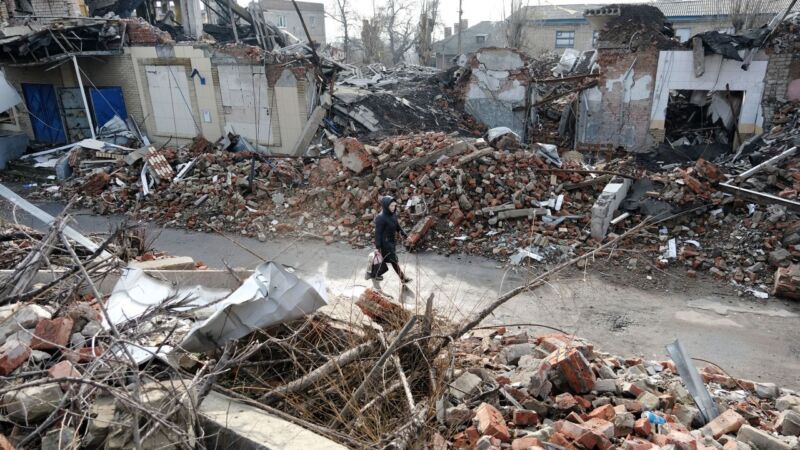
Today, due largely to the mounting dangers of Russia’s reckless invasion of Ukraine, the Bulletin of the Atomic Scientists’ Science and Security Board moved the hands of the Doomsday Clock closer to midnight than they’ve ever been. It marks the first change in three years to the Clock’s time; it now stands at 90 seconds to midnight.
Never in the Doomsday Clock’s 76-year history have we been so close to global catastrophe.
Founded by Albert Einstein and University of Chicago scientists who developed the first atomic weapons, the Clock is a universally recognized indicator of the world’s profound vulnerability to nuclear weapons, climate change and disruptive technologies. The closer to midnight the Clock is set, the greater the existential danger.
As the war in Ukraine veers toward its second year, the world finds itself in a most perilous moment. Tens of thousands of people, many innocent civilians, have been killed. No obvious solution to the conflict is in sight.
This stands in stark contrast to the goodwill and mutual understanding that followed the fall of the Soviet Union, when Russia joined the US and Great Britain and solemnly declared they would “respect the independence and sovereignty and the existing borders of Ukraine” and “refrain from the threat or use of force against the territorial integrity or political independence of Ukraine”. An historic deal was made. In return, Ukraine gave up its nuclear arsenal — then the third largest in the world — and became a signatory to the landmark Nuclear Non-Proliferation Treaty.
Russia brazenly violated its commitments in 2014 when it invaded eastern Ukraine and annexed Crimea. Now, it has launched a full-scale military invasion of the country, with Russian President Vladimir Putin even threatening the use of nuclear weapons. These unprecedented threats — in the context of a brutal and unpredictable war — raise the terrifying possibility nuclear weapons will be used for the first time since 1945, either by accident, some miscalculation or even a deliberate decision from Putin himself.
Disturbingly, Russia has brought its war even to the Chernobyl and Zaporizhzhia nuclear reactor sites, violating international protocols and risking the widespread release of radioactive materials. Efforts by the International Atomic Energy Agency to secure the plants have so far been rebuffed and the threat of disaster remains.
Underscoring the heightened danger, United Nations Secretary-General António Guterres recently warned the world is now entering “a time of nuclear danger not seen since the height of the Cold War”. He was speaking at a UN conference on the Nuclear Non-Proliferation Treaty, now undermined as a result of Russia breaking its pledge to respect Ukraine’s sovereignty.
The sole remaining nuclear weapons treaty between the US and Russia, New START, is also in jeopardy. Unless the two parties resume negotiations and find a solid basis for further arms reductions, the treaty will expire in 2026. This would then eliminate current mutual inspections, end limits on nuclear deployments and likely spur an unpredictable and unstable nuclear arms race amid the development of ever more advanced weapons. This will further deepen mistrust, perhaps irreversibly, and increase the likelihood of nuclear war.
While these threats are immediate and horrific, there are others. Countries in both Asia and the Middle East are talking about building nuclear arsenals. Tensions are escalating between the US and China.
At the same time, the world is increasing its use of fossil fuels and spewing heat-trapping greenhouse gases. Covid-19 is still killing huge numbers of people and mutating in dangerous new ways — with future pandemics a near certainty. As science advances, so too do the threats, both in biosecurity and disruptive technologies.
If there was ever a time for world leaders to take actions to turn back the Clock, it’s now. Until then, it is 90 seconds to midnight.
Jerry Brown is executive chair of the Bulletin of the Atomic Scientists and served for four terms as governor of California from 1975-83 and 2011-19. Sharon Squassoni is co-chair of the Bulletin of the Atomic Scientists’ Science and Security Board and a research professor at the Institute for International Science and Technology Policy at George Washington University’s Elliott School of International Affairs. Daniel Holz is co-chair of the Bulletin of the Atomic Scientists’ Science and Security Board and a professor at the University of Chicago, the Enrico Fermi Institute and the Kavli Institute for Cosmological Physics. The opinions expressed in this commentary are their own.
